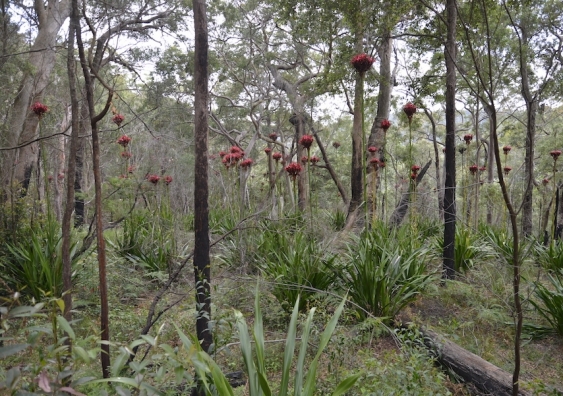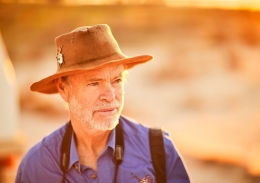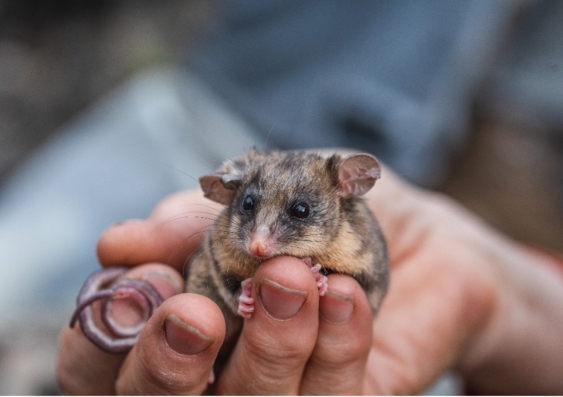UNSW team of ecologists to develop 'ecological balance sheet' for Royal National Park
Professor Richard Kingsford will lead the ecological health assessment of Australia’s oldest national park.
Professor Richard Kingsford will lead the ecological health assessment of Australia’s oldest national park.

Isabelle Dubach
Media and Content Manager
+61 432 307 244
i.dubach@unsw.edu.au
World-leading ecologist Professor Richard Kingsford and a team from the Centre for Ecosystem Science is helping the NSW government develop an ecological health monitoring plan for Royal National Park and adjacent Garrawarra State Conservation Area and Heathcote National Park, as part of NSW Parks & Wildlife Service’s (NPWS) “scorecards” project. They are collaborating with a team of ecologists of the Australian National University (ANU), who are doing the same for Kosciuszko National Park.
Scorecards will aim to enhance the health of NSW national parks by tracking key ecological indicators and using that data to refine management actions.
Biodiversity continues to decline in NSW, even in some national parks – scorecards will enable NPWS to systematically collect and apply the critical information needed to design and deliver effective park management.
Australia’s national parks make up 9.3 per cent of NSW across various desert, alpine and coastal ecosystems. Of the 1000 threatened species in NSW, more than 85 per cent are found on national park estate.
NPWS will develop scorecards across eight sites – nearly one-third of park estate – that represent the varied ecosystems right across NSW. The first two scorecards will be published online in late 2022 for Kosciuszko and Royal national parks.

Professor Richard Kingsford has worked extensively across the wetlands and rivers of the Murray-Darling and Lake Eyre Basins. Photo: UNSW Sydney.
Prof. Kingsford, Director of the Centre for Ecosystem Science at UNSW Science, is leading the development of the Royal National Park scorecard.
He’s a conservation ecologist who has worked extensively across NSW and other parts of Australia.
“Tracking and reporting on changes in ecosystems is fundamental for our parks, allowing for effective use of our resources to achieve conservation,” Prof. Kingsford said.
“It is really important to identify the conservation assets that we need to protect such as threatened species and iconic species and then focus on also monitoring the threats that affect them. This really allows managers to test the effectiveness of their management.“
Scorecards will measure key ecological data for the first time, providing ongoing snapshots of what’s happening with native plants and animals, important ecological processes, and threats to ecological health such as feral animals and weeds.
Key indicators used in scorecards will include threats (like feral animal populations such as deer or foxes), assets (such as changes in the populations of species), and changes in the functioning of ecological processes (such as nutrient cycling, fire regimes and habitat formation). The scorecards will also report on management activity and expenditure data.
Once NPWS has scientific scorecard data, it can effectively focus park management decisions, leading to improved conservation outcomes: park managers will be able to use scorecard metrics when making decisions around allocating resources to optimise the ecological return on investment in our national parks. For example, when metrics indicate deteriorating health, applicable management actions will be triggered.

Threatened species such as the much-loved Mountain Pygmy-possum (Burramys parvus) will be among key indicator species monitored in Kosciuszko National Park. Photo: Alex Pike DPIE
This approach is unique: nowhere in the world is there a similar scheme operating which integrates ecological health indicators and financial data into national park decision-making.
“Leveraging science to optimise our parks’ ecological health is key at this critical time,” said Atticus Fleming, Deputy Secretary NSW NPWS.
ANU Professor David Lindenmayer AO will lead the development of an ecological health monitoring plan for Kosciuszko, the second scorecard that’s part of the initial project.
The $10 million pilot program will run over four years, supported by a $7 million grant from the NSW government through its Environmental Trust and philanthropic investment of $1 million.